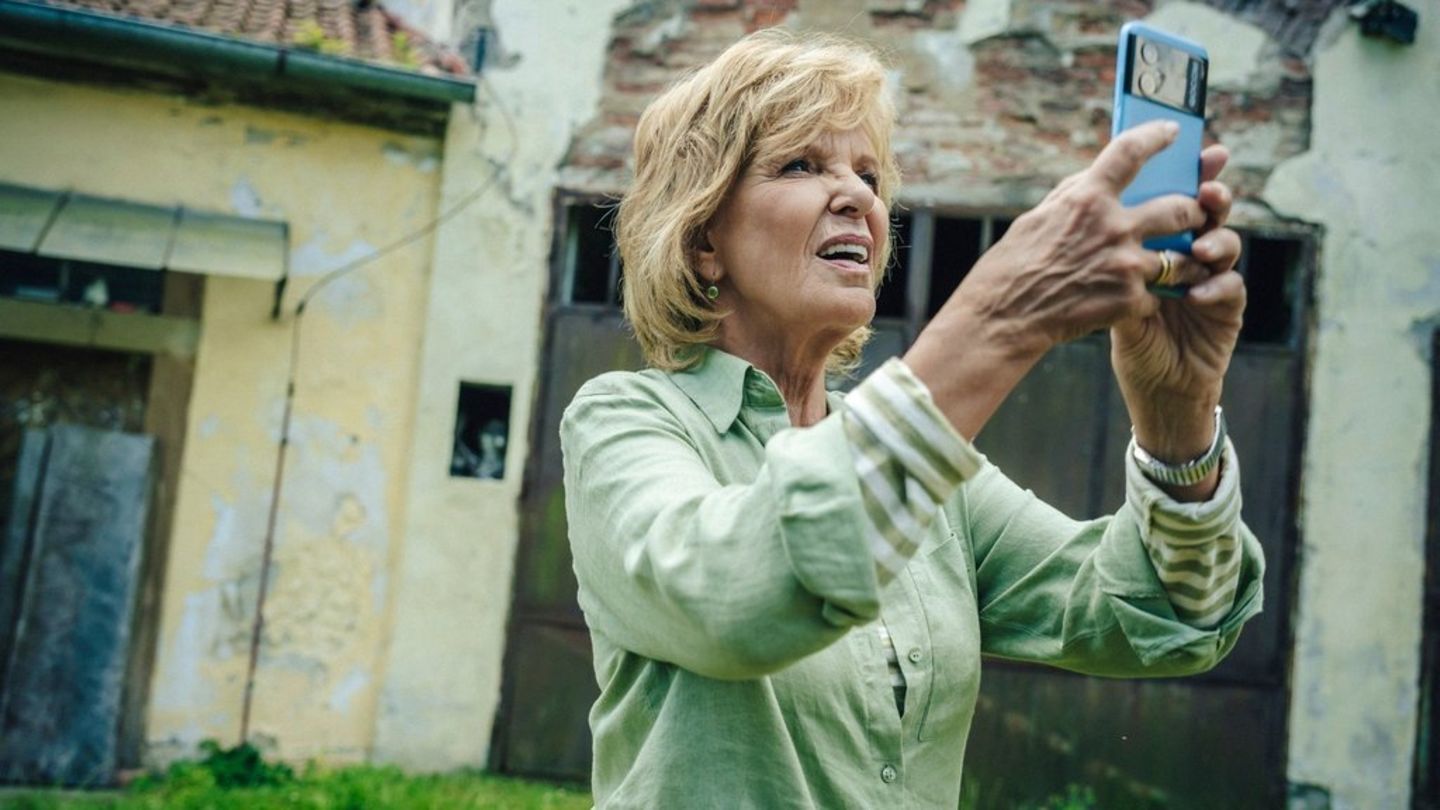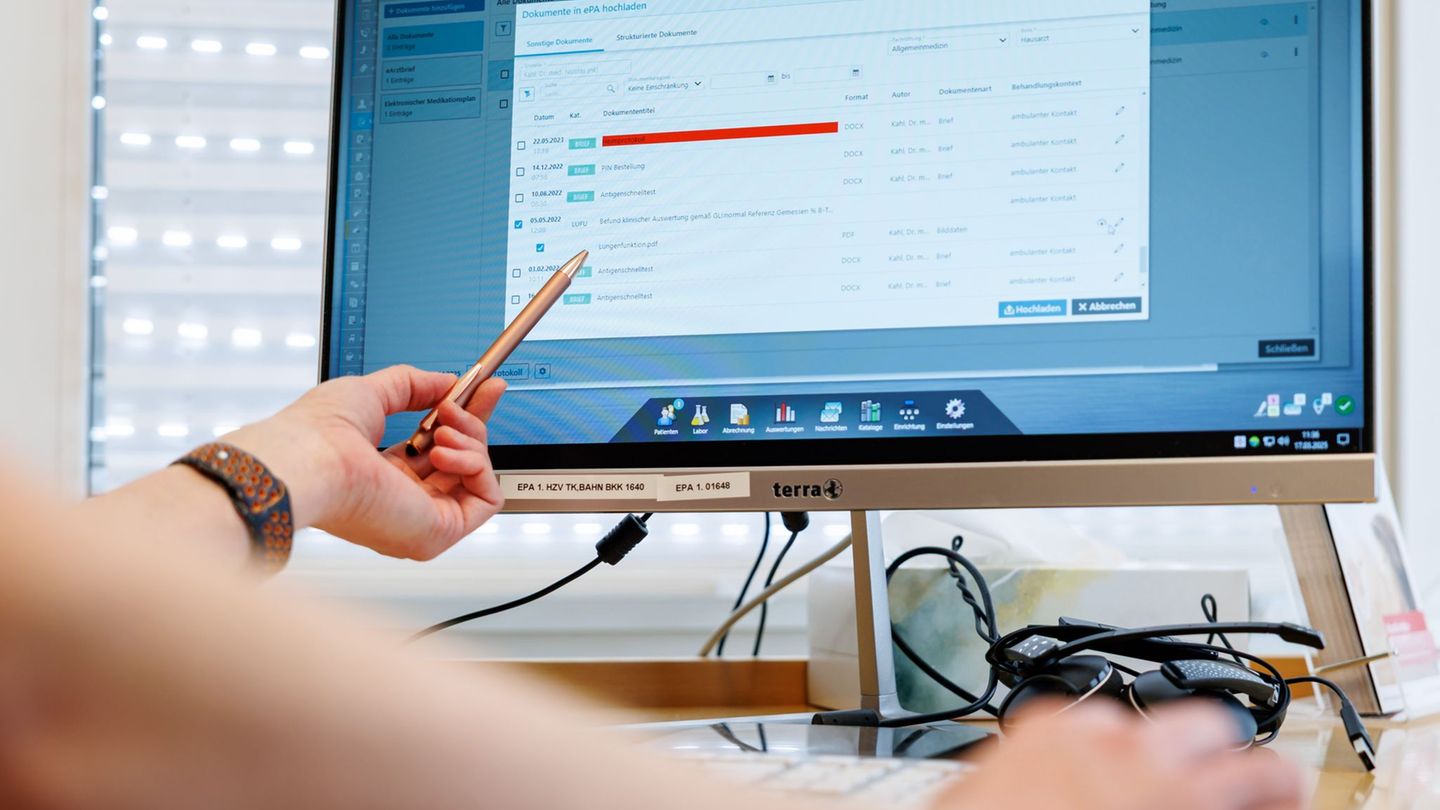When buying a car, it is customary to sell the old one. With smartphones, on the other hand, many old devices end up in the drawer. Experts in Germany see great potential here.
Sebastian Heyn dismantled the smartphone into individual parts with skillful fingers. First he had to heat the device in a machine to loosen the glue. Now the parts are neatly sorted in front of him: battery, circuit board, coaxial cable, front camera.
“The display of this device has to be replaced,” says the 35-year-old. Once it is dismantled, other components that are nearing the end of their life can also be replaced immediately. Workshops like here in Hartmannsdorf near Chemnitz repair cell phones for their owners or guarantee cases. But discarded old devices also end up there and are breathed a second life.
Hundreds of millions of cell phones in the drawers
Around 206 million such cell phones and smartphones are slumbering in the drawers of private individuals in Germany. This was the result of a survey on behalf of the industry association Bitkom. In terms of climate and environmental protection, efforts should be made to use the devices for longer, explains Bitkom sustainability expert Niklas Meyer-Breitkreutz. Because the production makes up the majority of their ecological footprint. The expert estimates that innovation leaps in newer models are now smaller than they used to be, so that young used cars are more attractive when buying a new one. “Refurbishment”, as experts call the general overhaul of used electrical appliances, is a growth market with great potential.
Up until now, used cell phones have often been sold privately. There are dangers lurking here for buyers and sellers. Private data could fall into the wrong hands and there is no guarantee for the buyer. Quite a few consumers therefore prefer to hoard the devices in their drawers, as the Bitkom survey showed. Also to have a replacement device on hand in an emergency.
Pierre-Pascal Urbon sees a hurdle in the previous settlement process. He is the CEO of Komsa AG, one of the largest family businesses in Eastern Germany. More than a million devices are repaired or reconditioned every year in Hartmannsdorf, Saxony. Now Komsa wants to get more involved in the purchase, preparation and sale of used smartphones. So far, the company has been active through specialist dealers, and a digital marketplace is now being prepared for end customers. Urbon wants to use, among other things, artificial intelligence for the optical evaluation of the devices.
The beginning has been made
Other companies have also recognized the potential. Manufacturers such as Apple and Samsung offer to trade in the old when buying new devices. They are processed or recycled in order to recover raw materials. According to Apple, 10.4 million devices were refurbished worldwide last year and 39,000 tons of electronic waste were recycled. But that is only a fraction of the new devices sold, an estimated 200 million units last year.
In addition, Internet platforms such as Refurbed and Back Market are reporting high growth rates in Germany. In such marketplaces, consumers can turn their old devices into money and refurbished electrical devices are offered. “The market is growing massively,” says Refurbed co-founder Kilian Kaminski. His company more than tripled sales last year. For the consumer, the more new a device is, the higher the proceeds. “I estimate that several million refurbished devices are already sold in Germany every year.” Smartphones made up the largest share.
Compared to other countries, however, Germany is lagging behind. While around 40 percent of people in France use such smartphones, it is only around 10 percent in Germany, explains Back Market Germany boss Martin Hügli, referring to internal data. “There is still a lot of room for improvement and we are only at the beginning.” He sees the most important argument for consumers in a better price-performance ratio compared to new devices. The greatest demand is for smartphones that are four to six years old.
Sustainability is becoming more and more important for customers
According to the experts, environmental awareness is also playing an increasingly important role. “Sustainability is becoming more and more important to end customers,” says Komsa boss Urbon, referring to the Fridays for Future movement. “In the future it could be hip to have a used device instead of a new one.” In addition to private individuals, he sees companies as a target group that provide a large number of employees with decentralized workplaces, such as service employees or parcel deliverers.
And it’s not just companies that keep an eye on the decommissioned smartphones. The Catholic aid organization Missio has been collecting cell phone donations for a number of years. Around 240,000 devices were reportedly handed over. The major part was recycled and so gold, silver and copper were recovered. Around 20,000 devices were processed and resold, as a spokesman informed. In total, the proceeds are put at 127,000 euros, which flowed into aid projects.
The Naturschutzbund (Nabu) also collects discarded cell phones and smartphones for a good cause. Under the motto “Cell phones for bumblebees, bees and Co.” The association has been cooperating with the telecommunications provider Telefónica Deutschland (O2) since 2011. Telefónica donates a fixed sum each year for the cell phones it collects, which goes to the Nabu insect protection fund.
David William is a talented author who has made a name for himself in the world of writing. He is a professional author who writes on a wide range of topics, from general interest to opinion news. David is currently working as a writer at 24 hours worlds where he brings his unique perspective and in-depth research to his articles, making them both informative and engaging.




